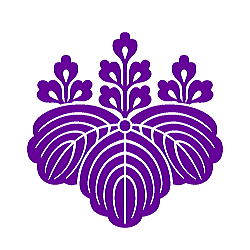
A mineral is a naturally occurring solid with a highly ordered atomic
arrangement and definite but not fixed chemical composition. It is usually
formed by geological processes. A mineral is not only a component of a
rock such as quartz, K-feldspar, plagioclase, and biotite contained in
granite, but also known as a jewelry such as diamond, garnet, ruby, and
sapphire. Ice just like frost columns and an icicle occurring on a below
freezing morning is also classified into a mineral. However, synthetic
crystals and those formed within an organism are not defined as a mineral.
By January 2016, we have discovered
5,107 minerals from all over the world. Just now, someone would find a new mineral
somewhere in the world. A total of 132 mineral species have been described
from Japan, and a new mineral is discovered in Japan every year.


Studying minerals involve various aspects of sciences and industrial applications.
First of all, "natural history" includes mineralogy that studies
mineral occurrence, coexistence, texture, and chemical composition of naturally
occurring minerals. Second, "Earth's interior and planetary sciences"
are aimed to investigate properties of mantle minerals and iron alloy under
the high pressure and high temperature conditions. Third, "crystallography"examines
the arrangement of atoms in minerals. Fourth, "solid-state physics"
studies how the large-scale properties result from their atomic-scale properties.
Finally, "inorganic chemistry" covering all chemical compounds
is the study of the synthesis and behavior of inorganic compounds. It has
applications to chemical industry including catalysis, ceramics, semiconductor,
medicine, and agriculture.
As mentioned above, mineralogy can be widely applied as one of the basic
natural sciences to the researches of the earth science, planetary science,
and material science. The study that reveals physical properties of minerals
is fundamental to a deeper understanding of the Earth's past, present,
and future. The application of inorganic chemistry to industry such as
photonic crystals, functional materials, and semiconductors brings about
an affluent society and hopeful future in the world.


University of Tsukuba is located in the center of Tsukuba Science City,
which is one of the largest science cities in the world. There are approximately
300 national and private institutions with world's highest level of research
in the city. Over 7,000 scientists are working on their researches at internationally
competitive levels. Because we have a great advantage in the scientific
abilities, we are able to conduct various researches with the highest quality.
We welcome students with backgrounds in geology, physics, chemistry, and
materials science.






